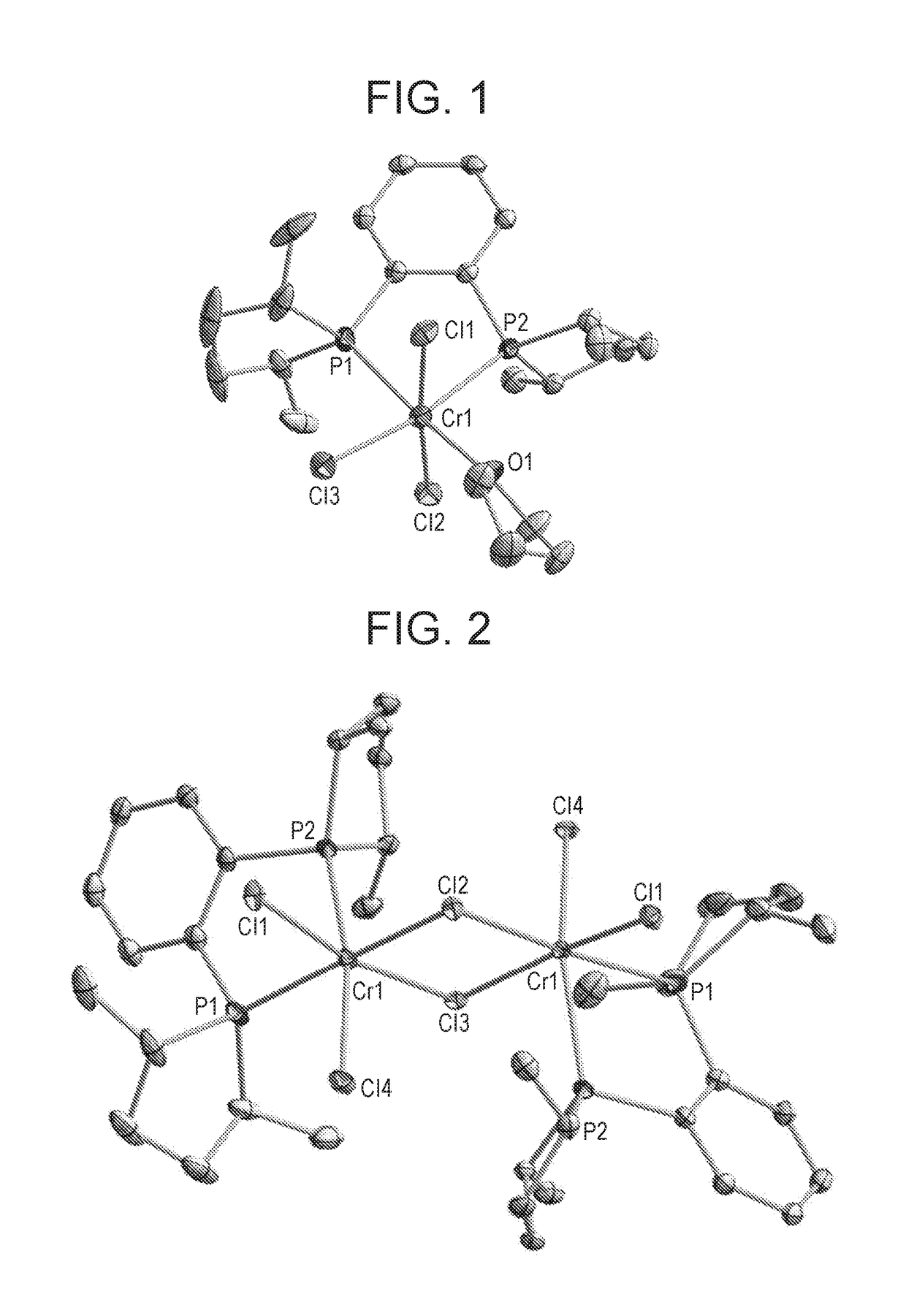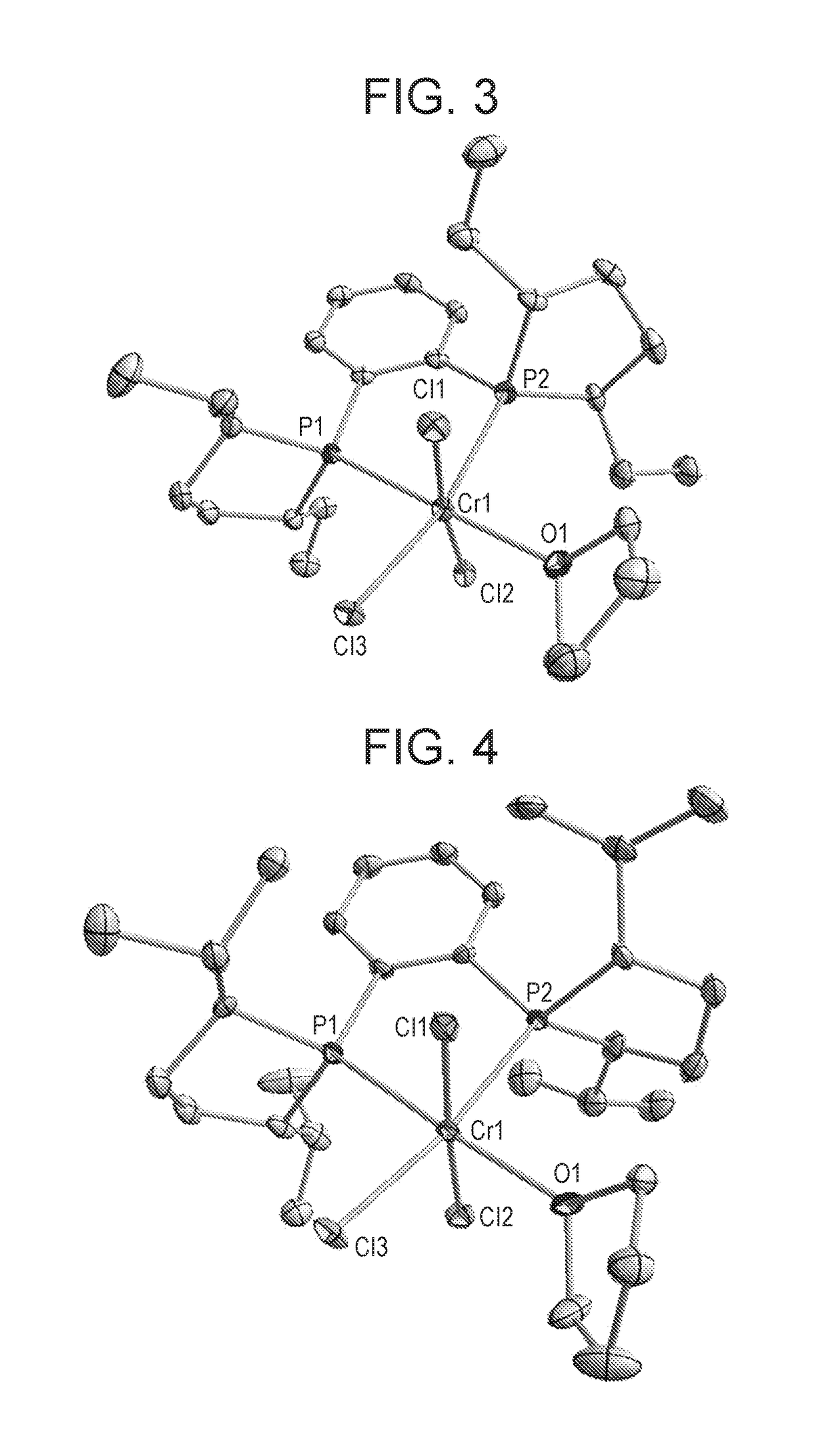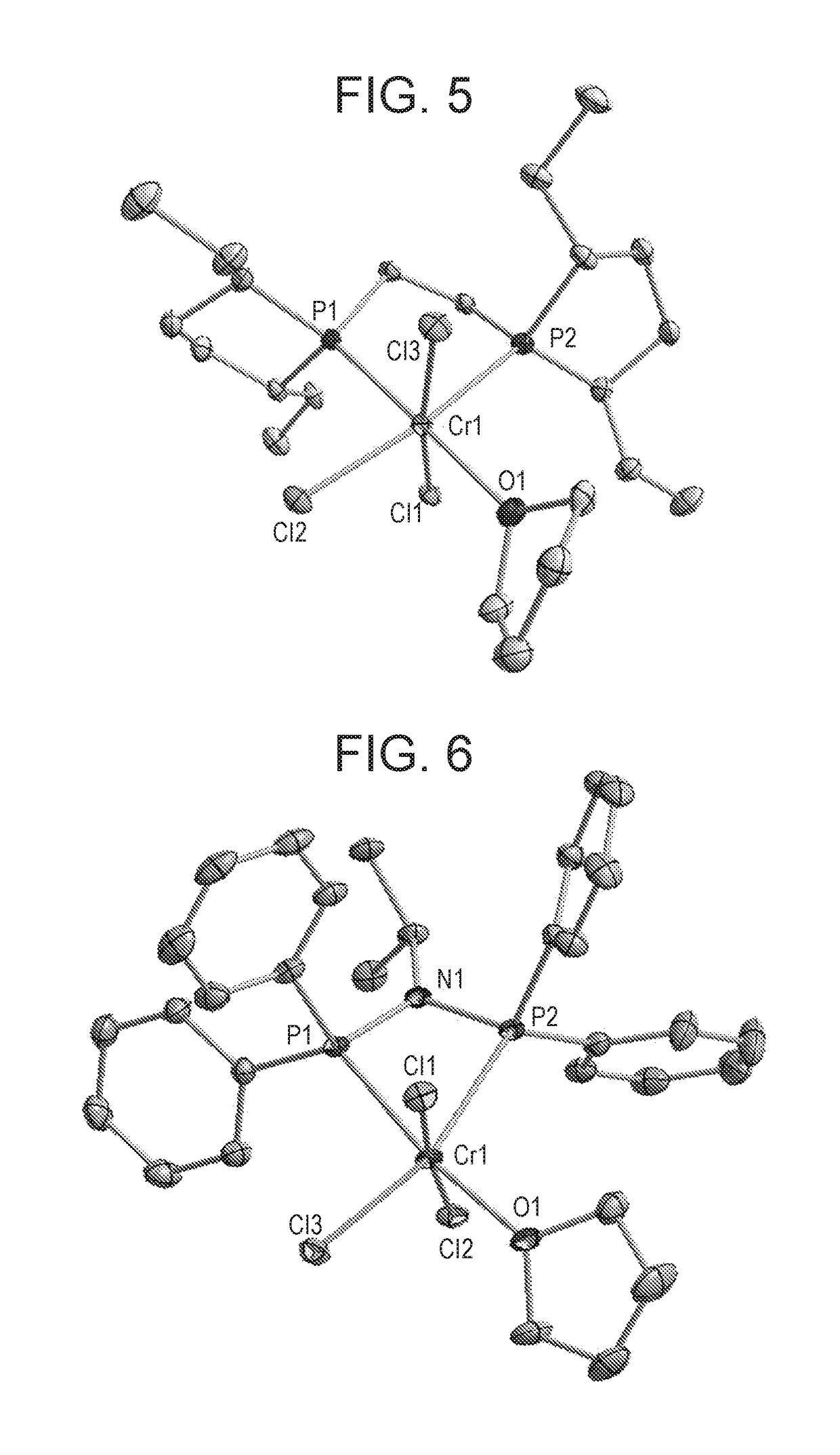Chromium complex and catalyst therefrom
a technology of chromium complexes and catalysts, applied in the field of oligomerization of olefins, can solve the problems of catalyst efficiency, catalyst selectivity, and catalyst deactivation, and achieve the effects of reducing the number of catalysts
- Summary
- Abstract
- Description
- Claims
- Application Information
AI Technical Summary
Benefits of technology
Problems solved by technology
Method used
Image
Examples
examples
[0632]All preparation reactions carried out at temperatures below −50° C. were conducted outside of a glovebox under inert atmosphere using Schlenk line techniques. All preparation reactions carried out under elevated pressure were conducted outside of a glovebox. Depending on the elevated pressure preparation reaction, the reactor involved may have been charged in a glovebox. Unless otherwise specified, all other reactions were conducted in inert (nitrogen or argon) atmosphere gloveboxes. All commercial chemicals were obtained from Sigma-Aldrich Corporation. Acros Organics, Strem Corporation, Oakwood Chemical, Oxchem Corporation, or Thermo Fisher Scientific, Inc.
[0633]Solvents used in the preparation reactions were purified as follows: Non-chlorinated solvents (e.g., tetrahydrofuran (THF), toluene, hexane, diethyl ether) were purified in a manner similar to the method of Pangborn et al. (“Safe and Convenient Procedure for Solvent Purification” Pangborn, A. B.; Giardello, M. A.; Gru...
preparation examples
Ligating Compound Preparation Examples
Preparation of ((rac)-N-(diphenylphosphanyl)-N-methyl-2,5-diphenylphospholan-1-amine), L553
Step 1. Preparation of 1-[(N,N)-dimethylamino]-1-r-oxo-2-t,5-t-diphenyl-phosphol-3-ene
[0635]
[0636]In a glovebox, a 200-mL jar was charged with aluminum chloride (22.84 g, 171.3 mmol) and 50 mL of anhydrous methylene chloride. The jar was placed in a freezer at −30° C. for 15 minutes then removed. Dimethylphosphoramidous dichloride (25.00 g, 171.3 mmol) was added to a stirred suspension. Once everything was dissolved, the jar was removed from the glovebox and the contents transferred to a 500-mL three-necked round bottom flask equipped with an addition funnel and nitrogen inlet. The flask and its contents were cooled in an ice bath. 1,4-Diphenylbutadiene (32.12 g, 155.7 mmol) was dissolved in anhydrous methylene chloride (˜200 mL) in the glovebox, transferred to the addition funnel, and slowly added under nitrogen atmosphere to the reaction mixture over a 4...
PUM
| Property | Measurement | Unit |
|---|---|---|
| compatible | aaaaa | aaaaa |
| molar ratios | aaaaa | aaaaa |
Abstract
Description
Claims
Application Information
 Login to View More
Login to View More - R&D
- Intellectual Property
- Life Sciences
- Materials
- Tech Scout
- Unparalleled Data Quality
- Higher Quality Content
- 60% Fewer Hallucinations
Browse by: Latest US Patents, China's latest patents, Technical Efficacy Thesaurus, Application Domain, Technology Topic, Popular Technical Reports.
© 2025 PatSnap. All rights reserved.Legal|Privacy policy|Modern Slavery Act Transparency Statement|Sitemap|About US| Contact US: help@patsnap.com



